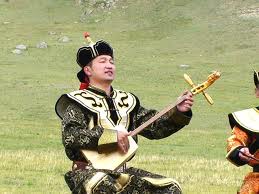 Khoomii is Mongolian traditional art and a way of expressing the nation’s sense in music and poetry. It is said that throat signing was invented long time ago but the precise time is not known. Khoomii has been in the center of researchers attention and terminology of throat singing has been explained in many different ways. Some scholars state that khoomii is imitation of other sounds.
Khoomii is Mongolian traditional art and a way of expressing the nation’s sense in music and poetry. It is said that throat signing was invented long time ago but the precise time is not known. Khoomii has been in the center of researchers attention and terminology of throat singing has been explained in many different ways. Some scholars state that khoomii is imitation of other sounds.
Mongolians’ worship of nature and its connection with human being are believed to be the main influencers in origination of throat singing. Hence Mongolians gather their inspiration and strength from nature, they did not just mimicked the nature’s sound but also entered the essence of it when they created this wonderful art. For that reason, khoomii has been an important part of Mongolian traditional celebrations, culture, customs and every day life.
Khoomii was developed in various ways in different parts of the country but origin of it stayed the same. It is the only traditional art that is sang by pair of sounds. There are different types of khoomii and Mongolian throat singing is divided into 4 man categories, Kharkhiraa, Isgeree, Narmai, and Shaahai. “Kharkhiraa” is similar to bass sound and it comes out of depth of a chest. “Isgeree” is a sound from an oral cavity. “Narmai” is a sound from nose. “Shaahai” is a sound when a singer squeezes his or her voice.
Mongolian Khoomii singers versify when they throat sing. Tuva throat singers do not versify but sometimes lulling when they sing. Khoomii can be sung in a modern music tune and also with the sound of all musical instruments. Mongolian throat singers have been the subjects of study for the world music critics and all the locals of Chandmani soum, Khovd province of Mongolia said to perform khoomii well.
The tale of Khoomii: Once upon a time, a little orphan boy lived in a tall mountain’s foot for 3 years. The mountain had lots of different sounds of eco and when the wind blows hard, a loud noise was created. As the little boy had no one but the nature to express himself he started mimicking the eco. When his voice reached other people in the area through wind, locals called it “Khoomii”.

